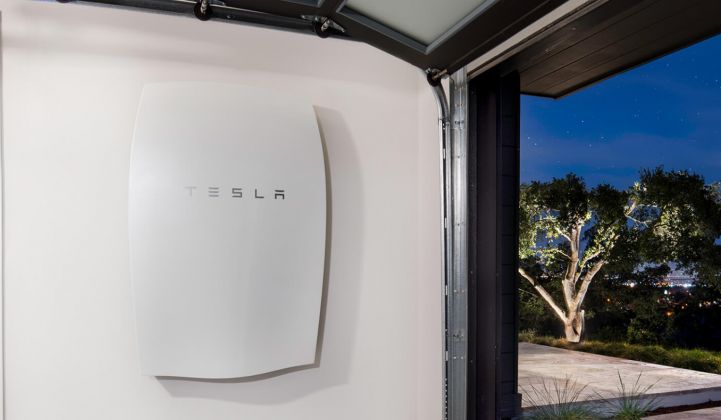Tesla has confirmed some of the improvements to its Powerwall battery in advance of an expected launch of a new version of the product.
The main changes are a simplification to the handling and wiring requirements for installers, as well as the introduction of Powerwall compatibility with inverters from SMA, the global residential PV inverter company.
SMA is the world’s largest inverter manufacturer by revenue and second largest by shipments, according to GTM Research.
The first SMA-tied Powerwall installations are due to take place “in the next few weeks,” said a Tesla spokesperson. Compatibility with SMA’s low-cost Sunny Boy range will allow Tesla to address SMA's 50 percent global market share and drive retrofit markets.
At launch, the Powerwall was designed for installation with SolarEdge inverters. The SolarEdge SE7600A-USS Powerwall-compatible 7.6-kilowatt StorEdge inverter currently retails on WholesaleSolar.com for $2,944.
A Powerwall-compatible SMA Sunny Boy Storage 2.5, meanwhile, is currently retailing in Europe for €1,090 ($1,240).
Although compatibility is a major feature of current Powerwall development work, Tesla is not intending to produce more fully integrated systems like those commercialized by rivals such as Adara Power, Concept by US and Sonnen.
Integration work will continue to be the responsibility of Tesla channel partners such as SolarCity.
Tesla has also admitted to issues with noise emitted by some of the first Powerwalls installed, but said it moved quickly to introduce a permanent fix in its product design.
Tesla said complaints were “an isolated issue” but conceded that the noise in “the very first version was higher than what we should have let out the door.”
In its financial update for the first quarter of 2016, Tesla confirmed it had shipped 25 megawatt-hours of storage capacity in the first three months of the year.
“We delivered over 2,500 Powerwalls and nearly 100 Powerpacks in the quarter throughout North America, Asia, Europe and Africa,” the company said in a shareholder letter.
Previously, an analysis by GTM Research had revealed Tesla could end up selling 168.5 megawatt-hours of storage this year to SolarCity alone. This includes 52 megawatt-hours for a solar-plus-storage project in Hawaii.
During an analyst call, Tesla Motors’ President of Global Sales and Service Jonathan McNeill said further interest in the Powerwall might arise from potential owners of Tesla’s new car, the Model 3, which attracted hundreds of thousands of reservations.
“It should be noted that these folks are not interested only in Tesla Motors, but also in Tesla Energy,” McNeill told analysts. “The price point of the Tesla Powerwall is an accessible price point for many of these folks, and so they're expressing interest in both.”
The most popular markets for the Powerwall so far are Hawaii, Australia, South Africa and Germany.
It is believed almost all the units sold so far are for daily cycling, after Tesla’s 10-kilowatt-hour weekly cycling Powerwall product was taken off the U.S. market in March.
Removal of the product may have created some confusion for Tesla in the U.S. because SolarCity may have told customers the smaller daily-cycling model being sold elsewhere was not available in America.
This wasn’t true, a spokesperson said: “The idea was always to have both in all markets.”
Tesla has modified other language around the Powerwall. For example, its daily cycling product was initially described as having a 7-kilowatt-hour capacity, but this has subsequently been downgraded to 6.4 kilowatt-hours. This effectively increases the price of the battery by more than 9 percent per installed kilowatt-hour, from $429 to $469.



